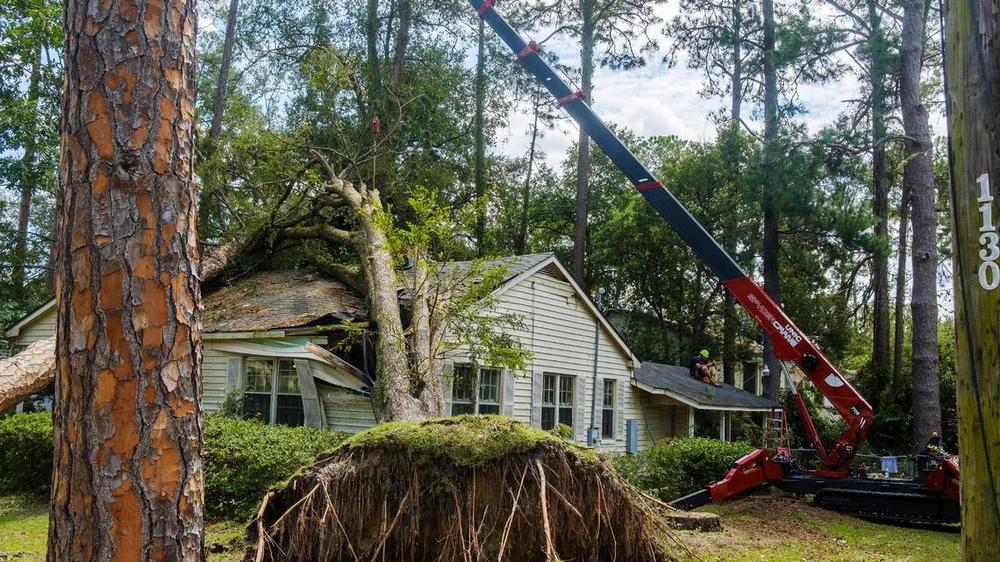
Caption
Scores of homes near the core of the South Georgia city of Valdosta were damaged by large trees felled by Hurricane Idalia.
Credit: Grant Blankenship / GPB News

Scores of homes near the core of the South Georgia city of Valdosta were damaged by large trees felled by Hurricane Idalia.
Georgia experienced 107 billion-dollar disasters between 1980-2022, the highest amount of any state in the Southeast, according to a prominent group of experts and scientists.
The Fifth National Climate Assessment was published on Tuesday by the US Global Change Research Program, banging the climate change warning drums that climate scientists have been highlighting for years: the crisis is here and there are known, working solutions.
The most glaring issue in Georgia is the economic hit and frequency of disasters (exacerbated and heightened by climate change) that will get worse with every degree of warming if not acted on, according to the assessment. Additionally, the working group presented solutions that farmers can adopt to create higher crop yields that are threatened by drought.
The latest billion-dollar event this past August, Hurricane Idalia — which affected Valdosta and nearby towns – clocked in at around $2.5 billion in damages. The most billion-dollar disasters in Georgia have occurred this year. Conversely, Florida has experienced 75 events in the same 42-year period.
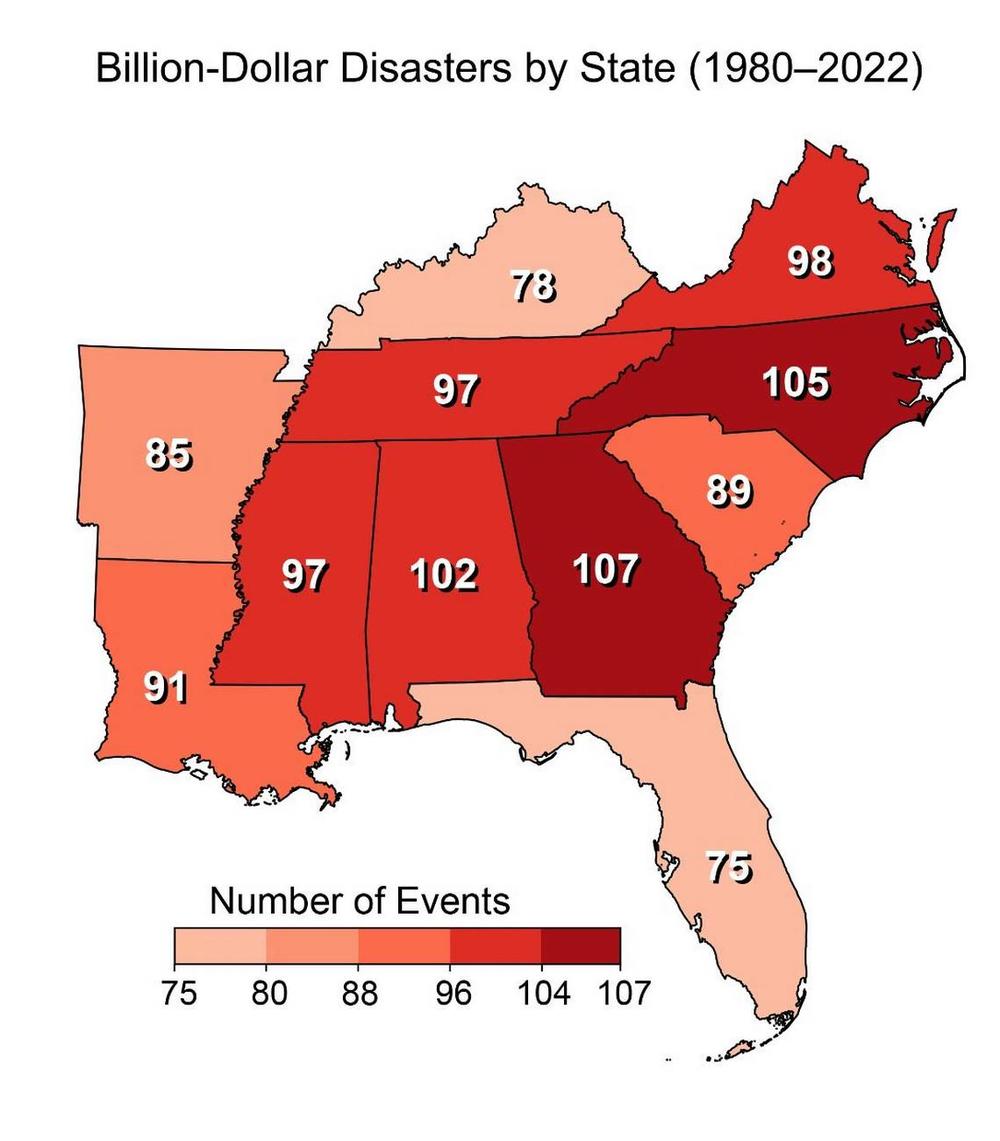
NOAA billion-dollar disasters by state during 1980–2022 in the Southeast. The map adds up billion-dollar events for each state affected.
“Without proactive adaptation measures in place, Georgia faces some of the highest economic risks related to energy infrastructure damage,” Saumya Narechania, Managing Director of Climate Power, a climate action working group, said. “Increased drought due to climate change threatens Georgia’s economy, in particular its agricultural production.
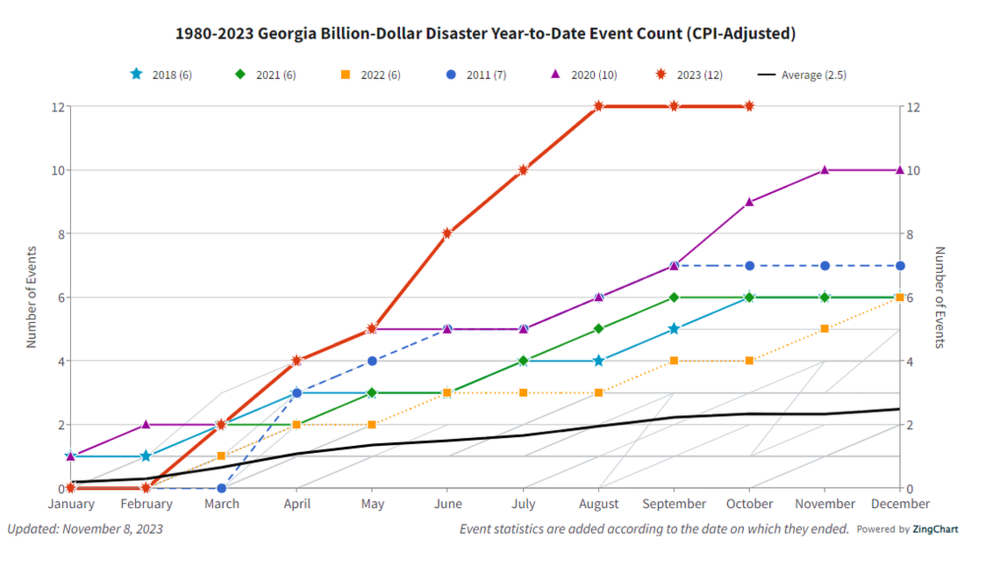
In 2023 Georgia has experienced 12 billion-dollar disaster events.
The National Climate Assessment must be published every four years as mandated by Congress per the Global Change Research Act of 1990. The working group of scientists includes more than 750 experts who author and contribute to the assessment. It contains the latest information that scientists compile to create the most up-to-date climate knowledge for decision-makers and across the country.
Much of the report’s information comes from the National Center for Environmental Information (a branch of the National Oceanic and Atmospheric Administration or NOAA). The agency has a user-friendly tool to dive into the billion-dollar events over the last 40 years. It can be sorted by disaster type, year, and has information on the cost and deaths related to the event.
In Georgia, severe storms are the most frequent disaster type with a cost of $60 billion since 1980.
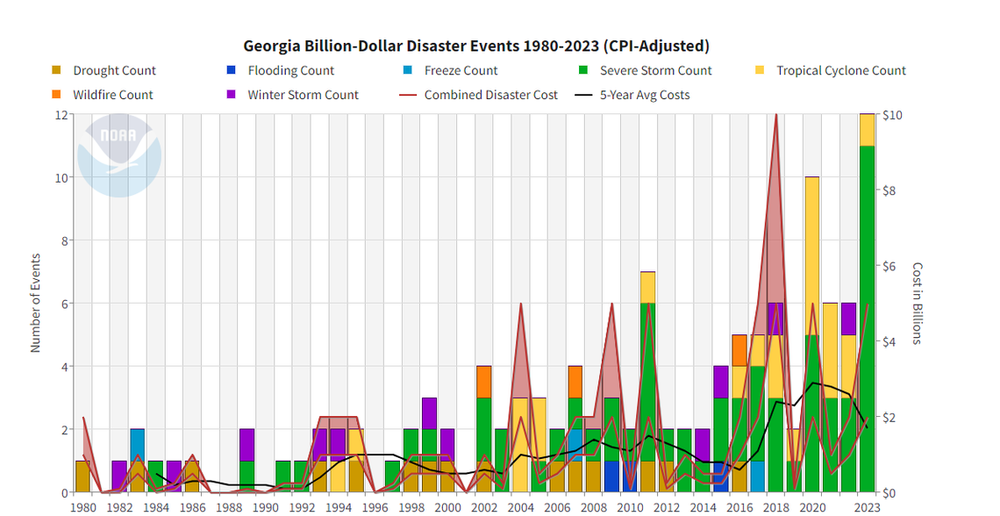
In Georgia between 1980-2023 there have been 60 severe storm events and 24 tropical cyclone events resulting in the death of 8,413 people and tens of billions of dollars in economic cost.
To tackle emissions, the U.S. and Georgia must continue to be resilient by investing in resources to mitigate and adapt, especially in areas outside of the coastal or metro areas.
“Changes in temperature, drought, extreme rainfall, and sea levels are already threatening the Southeast’s agriculture and other food-related systems,” the Southeast chapter of the report says. “With every increment of global warming, it will disproportionately harm farmers and small-scale operations, increasing competition between urban and rural communities for water.”
Precision agriculture and smart irrigation methods are ways farmers can more efficiently farm, reducing water, labor, and/or fuel.
“Climate change is and will continue to be a challenge for farmers, but there are many things that producers can do to help adapt to the changes,” Knox said in an email.
Knox suggested farmers use the free app, smart irrigation apps developed by UGA to see help begin implementing these methods. She also suggests using cover crops to trap carbon and reduce nutrient and soil loss.
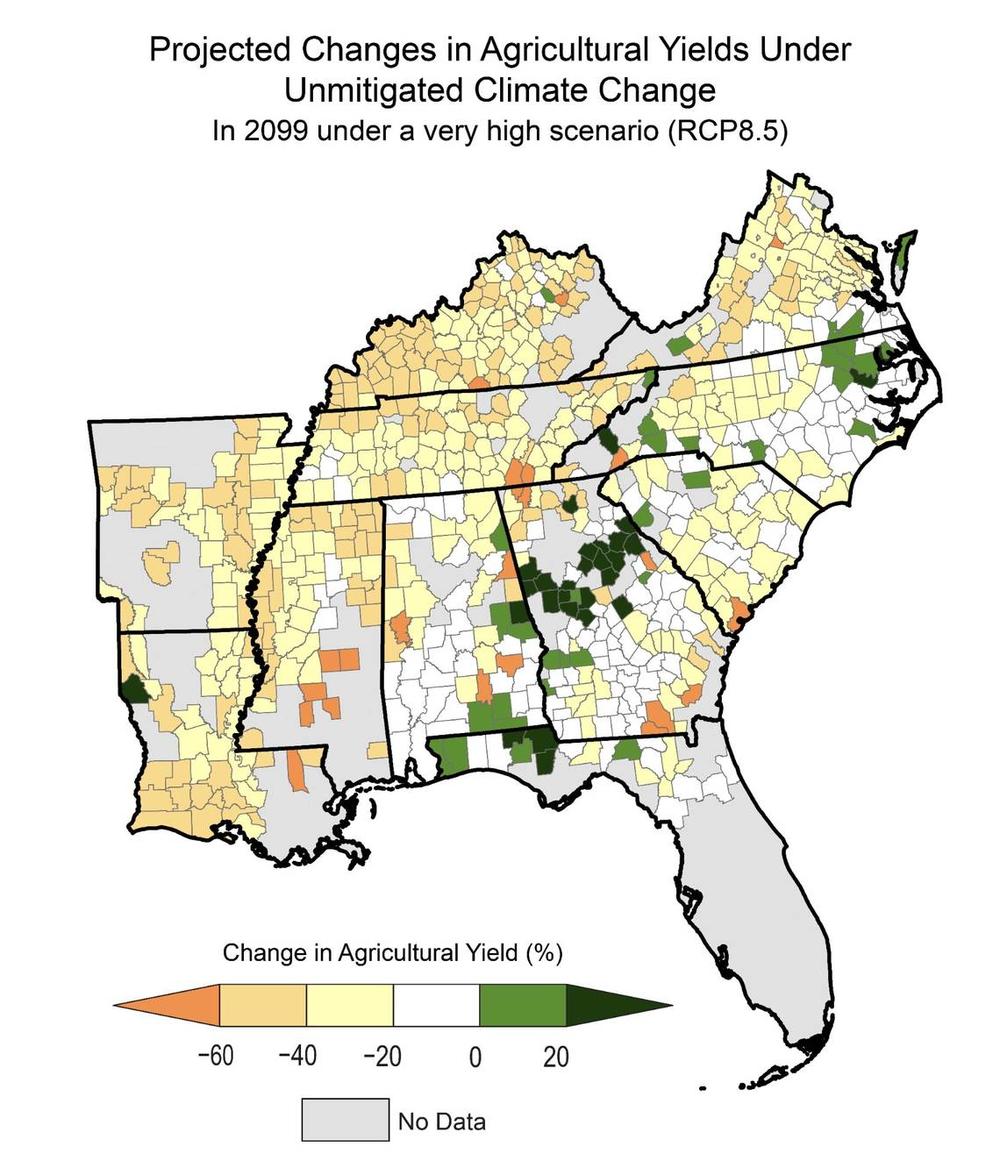
Agricultural yields are expected to decrease under very high warming if we continue business as usual.
New crops like olives and satsuma citrus are being introduced due to changing growing zones brought on by changing temperatures.
The assessment also made it clear that it is imperative farmers collect data about subjects like soil moisture, temperature, or other variables. Knox noted, “This is a problem for smaller, more rural and economically disadvantaged farmers since there is a cost involved in gathering data, especially if they don’t have access to the internet.”
This story comes to GPB through a reporting partnership with Ledger-Enquirer.